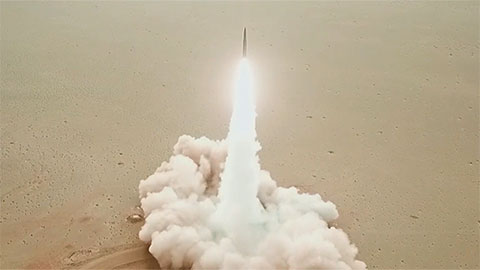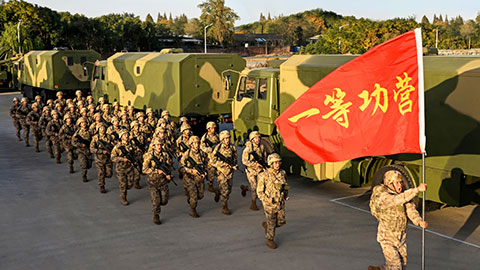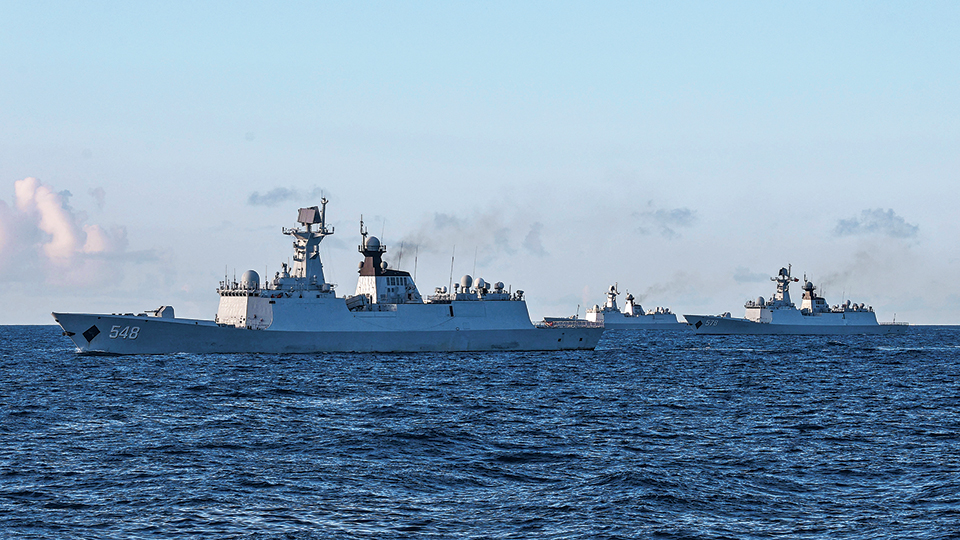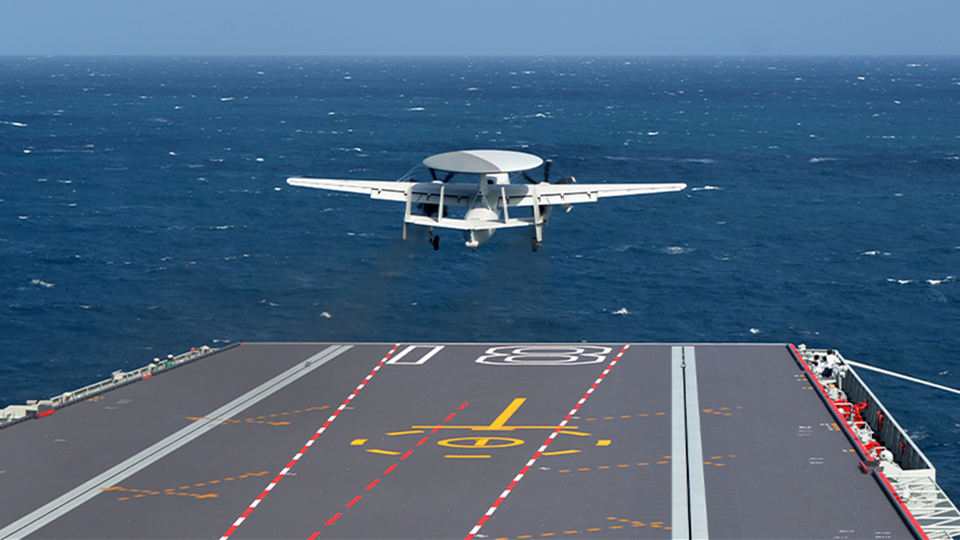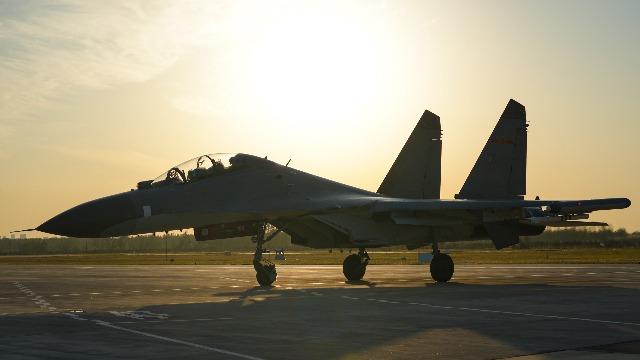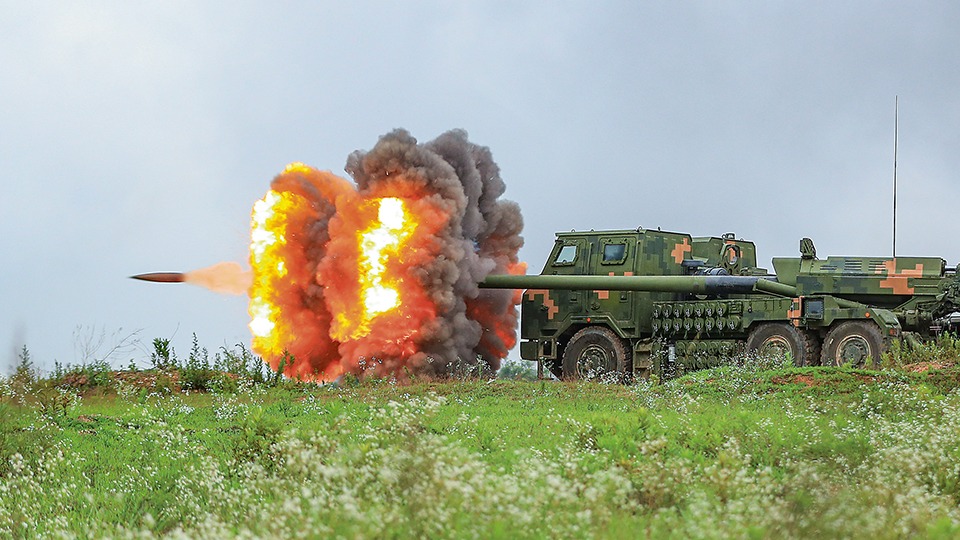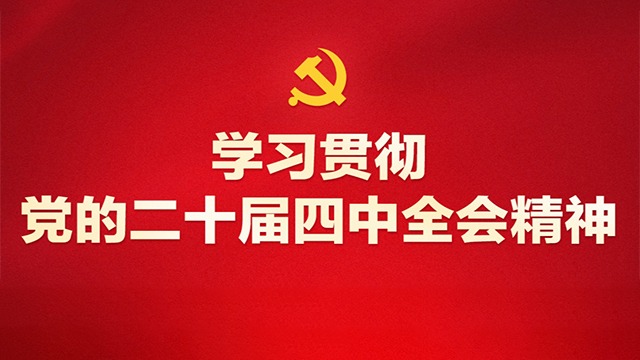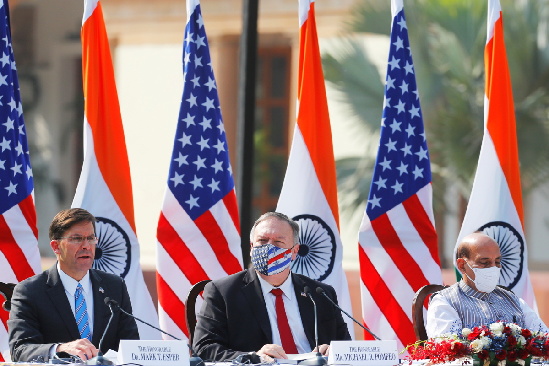
By Ji Cheng
India and the US officially sealed the Basic Exchange and Cooperation Agreement for Geo-Spatial Cooperation (BECA) at the third “2 plus 2” dialogue between their foreign and defense ministers recently held in New Delhi, capital of India. The two sides reviewed their cooperation in the communications system, information sharing, and defense industry and trade, discussed other potential areas of collaboration, and agreed to deepen exchanges and cooperation on such topics as maritime security, counter-terrorism, and supply chain flexibility in the future.
Many analysts regarded the inking of the agreement as signaling the “quasi alliance” between Washington and New Delhi in terms of military intelligence and information sharing.
The two countries already signed the 10-year Framework for the U.S.-India Defense Relationship(NFDR) in 2015, in addition to three major defense cooperation deals, namely the General Security of Military Information Agreement (GSOMIA) in 2002, the Logistics Exchange Memorandum of Agreement (LEMOA) in 2016, and the Communications Compatibility and Security Agreement (COMCASA) in 2018. The signing of the latest agreement marked the completion of the bilateral “1+4” defense cooperation architecture.
However, given their respective national interests, the defense cooperation will be at best “strategic mutual utilization” that’s far from a security alliance in the real sense.
It is America’s constant cajoling and induction of India over recent years that has pushed their defense cooperation onto a fast track, with a defense agreement being reached almost every other year and the consultation cycle becoming increasingly shorter. The contents of the agreement indicate Washington’s concession of interests to New Delhi, which can be attributed to the following two reasons.
First, the US views India as a major force for implementing its Indo-Pacific strategy and countering the rise of regional powers.
In June 2016, the US Department of Defense officially designated India as its “main defense partner”. In November 2019, they held the first joint exercises of army, navy and air force troops. In July this year, the USS Nimitz Aircraft Carrier had a joint exercise with four Indian naval vessels in Indian Ocean. The signing of BECA will also intensify the exchanges between their defense intelligence agencies and make it possible for the two sides to extend their operations to such new combat domains as cyberspace and outer space.
Second, the US aims to snatch India’s domestic arms market from Russia and restrict Russia-India arms trade.
Washington has gradually relaxed its regulation on arms export to India in the past decade. US arms sales volume to India has soared from basically zero in 2008 to USD16 billion (about RMB107 billion) in 2019, with a series of American weapons such as P-8I long-range maritime reconnaissance and anti-submarine warfare aircraft, C-17 and C-130J transport planes and AH-64 armored helicopter being commissioned in the Indian military. Under the new agreement, the US, through “information node exchange”, is likely to include India’s critical industrial chains such as military and information communication in an American system, so that it can keep selling arms to India and eventually replace Russia to become its top arms provider.
The Indian government, on the other side, also has its calculations by signing the deal.
It is a known fact that the formation and strength of combat forces in info-based conditions largely depend on one’s capability of obtaining and processing information and of accurately commanding and controlling relevant weapon operation platforms. The new agreement will help the Indian military effectively shore up its weaknesses in the perception of the geospatial situation and input all kinds of information in its current combat commanding system to make its communications devices and guided weapons more precise and augment its combat force in a short period.
Moreover, taking advantage of Washington’s eagerness to use it to counter regional powers, India also intends to leverage on the US to fend off part of the resistance to its implementation of the“Look East Policy” (LEP). The country has already signed relevant materials, labor and logistics assurance agreements with Japan and Australia, revealing its wish to merge into the Quad mechanism deeply.
Obviously, New Delhi signed BECA mainly to enhance its military strength and expand its regional influence. Its unique geography, cultural traditions, and long-standing diplomatic philosophy decide that it won’t easily change its “non-alliance” stance, so Washington’s attempts to use India as a cat’s paw to counter regional major countries may end up a pipe dream.








